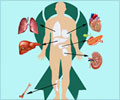Donation after circulatory death involves the retrieval of organs for the purposes of transplantation from individuals on ventilator support who are not brain dead.

Candidates for DCD are individuals who are on ventilator support due to nonrecoverable or irreversible neurologic injury not meeting brain death criteria. Much studies have been done to compare the functionality and survival of DCD organs especially kidneys with ones retrieved from brain dead donors. Values have been found to be comparable. However DCD kidneys were associated with technical complications such as higher rates of primary graft nonfunction, delayed graft function, discard, and retrieval associated injury. These, however, do not affect the long-term organ function and
survival.
With adequate precautions, such as maintenance of normothermic (i.e. normal temperature) regional perfusion during DCD abdominal organ retrieval, organ injuries due to poor blood supply (ischemic organ injury) can be averted. Extension of the concept of living kidney donation in relation to imminent death of potential DCD donors can help us to achieve a significant increase in transplantable kidneys.
Ongoing researches are trying to identify, prevent, and repair DCD-associated organ retrieval injury. Encouraging results have been obtained using techniques such as ex situ
pretransplant organ perfusion of DCD organs.
Download an Organ Donor Card From http://www.mohanfoundation.org/downloads.asp
References:
2. Donation after circulatory death.Manara AR, Murphy PG, O'Callaghan G. Br J Anaesth. 2012 Jan;108 Suppl 1:i108-21. doi: 10.1093/bja/aer357.









